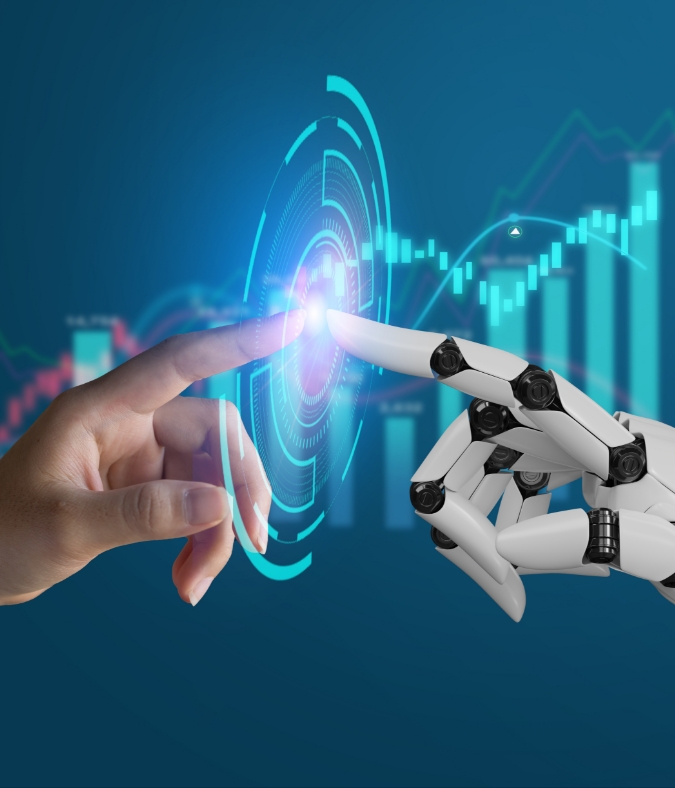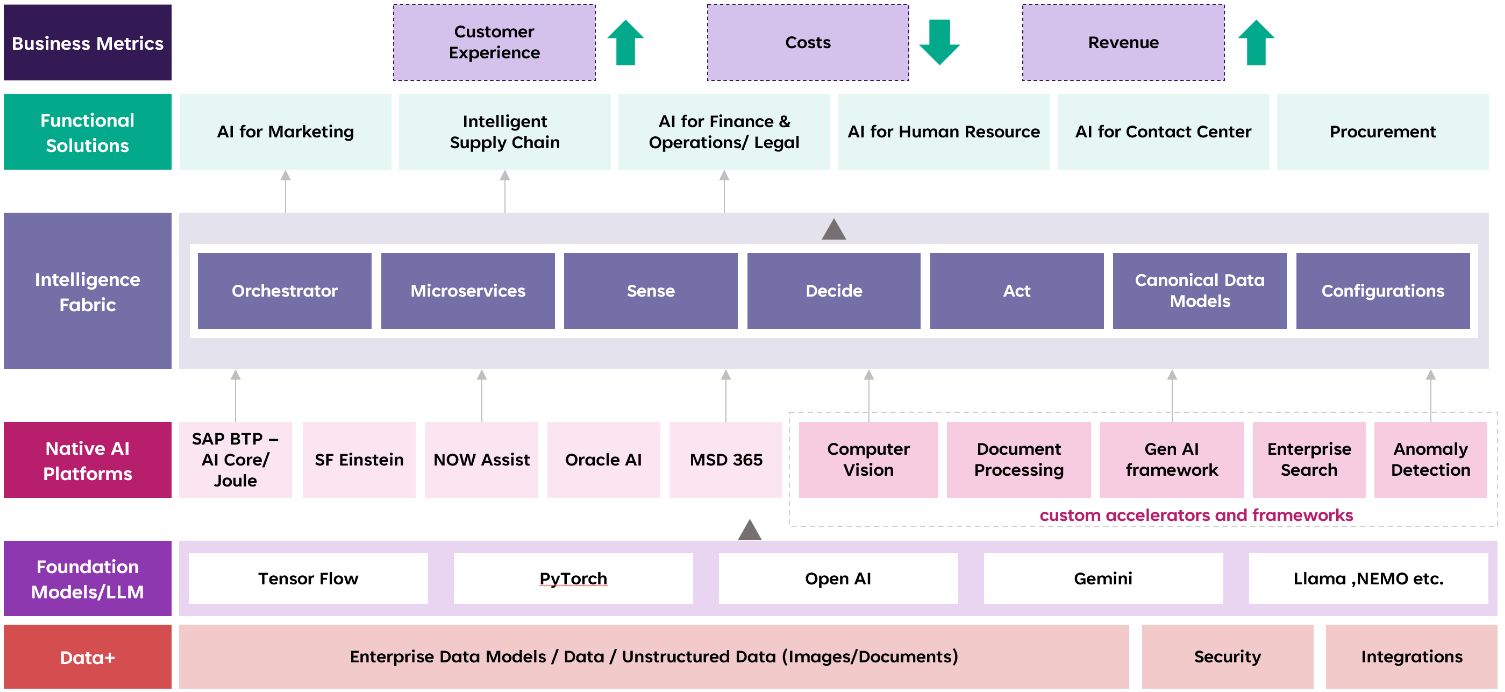An intelligence fabric (see above) is an emerging layer of enterprise technology that sits between the AI models and the functional solutions and services that drive activity across the business. Optimized data pipelines and powerful AI models are a starting point, but they are not an endpoint. Predictive and even prescriptive insights are only as useful as the actions they trigger, and the intelligence fabric is where those insights are translated into action.
The intelligence fabric includes three major components: the sensing agents (which monitor relevant KPIs across the organization), the AI model repositories, and the microservices that act via the enterprise applications. For an intelligence fabric to function properly, these three elements need to work together to monitor activity and execute the defined model triggers. If a rule needs to be acted upon, the intelligent fabric needs to reliably call the microservices to get something done in an enterprise application. The intelligence fabric – consisting of workflows that reside in enterprise applications and supply chain platforms – will be the orchestration layer of the intelligent enterprise of the future.
What Intelligence Fabric Workflows Look Like
Current auto-decisioning workflows demonstrate, on a more atomized level, what an end-to-end intelligence fabric will look like. An eCommerce recommendation engine, for example, is continuously transforming numerous pieces of customer data into specific recommendations. An end-to-end intelligent fabric extends this capability throughout the enterprise to touch functions like inventory and warehouse management, restocking, and even merchandising and purchasing, considering factors like seasonality, real-time trending purchases, and weather forecasts.
The challenge is achieving this level of seamlessness across the business – both internally and externally – and across industries defined by attributes like heavy physical infrastructure and firm regulatory oversight.
For example, reimagine logistics through the lens of the intelligence fabric. If there is an interruption in a global shipping lane, the sensing agents would be triggered, orchestrate rerouting automatically, and send instructions to ships en-route on how best to navigate the disruption. With the right IoT solutions, the sensing agents might even be able to account for dynamic changes in wind speeds or ocean currents, saving energy costs and minimizing the carbon footprint of the chosen route.
None of this is to say that every decision will be autonomous. Of course, there will always be a role for creative, strategy minded humans in the loop. An intelligence fabric will simply create an enterprise-level intertia toward autonomous workflows, and a common framework and set of enterprise applications that enable autonomous actions.
How to Weave the Intelligence Fabric
An intelligence fabric is a set of emerging capabilities rather than a single, concrete implementation. As such, enterprises will need to take a laddered approach.
Determine your existing intelligence quotient today. How ready am I for this process? Do we have technology maturity? An enterprise has many parts like marketing, HR, operations, etc. – there are core business areas and support functions. The area with the highest intelligence quotient is where you start rolling out the intelligence fabric. This gives you the area with the best possible ROI to start.
For most enterprises, technology integration partners will be indispensable. Building an agile and reliable intelligence fabric will require orchestrating cloud services, hyperscalers, ERP/CRM systems, IT and OT infrastructure, and numerous potential AI models. It’s a complicated and delicate process, requiring inherent data science excellence, a deep understanding of the industry context, and an up-to-minute sense of the relevant service/product provider landscape.
It’s worth noting that an intelligence fabric cannot be a proof-of-concept. To ensure the system can produce the desired KPIs, it must be integrated with real-time sensing agents across the enterprise. It must be fully built out for a specific use case before it can be measured. Because of this, enterprises must approach the intelligent fabric with the mind of an entrepreneur – they must embrace an appetite for risk-taking and be prepared to fail fast and adjust, quickly extending the intelligence fabric in the most profitable directions and pulling back in areas that seem immune to autonomous optimization.
Achieving the Future of Enterprise
For many companies, the promise of AI and GenAI is still largely just a promise. Particularly for GenAI, many initial forays have been exploratory in nature – proofs-of-concept to vet long-term business value and use cases, rather than wholesale big bets.
As these new technologies become an integral part of every enterprise’s technology stack, they must be stitched together with all other enterprise technologies into a unified and orchestrated system. While the intelligent enterprise of the future will be more autonomous than the intelligent enterprise of today, the human element will remain the most important. Organizations will need the right set of business leaders with AI-first mindsets to steer intelligence fabric implementation toward lasting success. A crucial piece of this puzzle will be ensuring that necessary guardrails related to security, model drift, hallucinations, and other risks must be put in place to ensure responsible AI outputs. After all, autonomous and efficient decisions only add value if they are reliably the right decisions.
To seize the AI-driven future, forward-thinking leaders need to consider how they will orchestrate business models around AI models. By envisioning AI models as components of a much larger fabric that includes everything from data ingestion to the employee microservices experience, organizations can remove unnecessary technology friction and integrate a truly market-leading AI strategy.
 Locations
Locations




